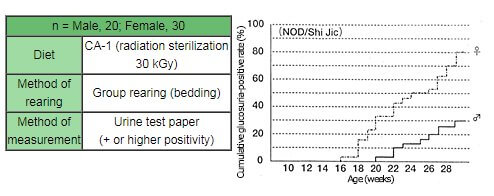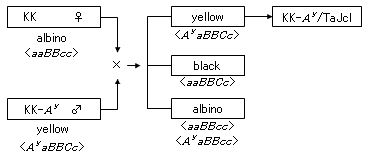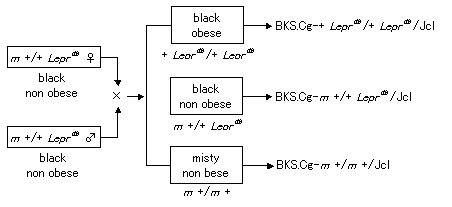Diabetes Model Information-3
Animals/Diabetes Models/

Cumulative glucosuria-positive rates of type 1 diabetes model
Cumulative glucosuria-positive rates of NOD/Shi Jic

Method of production and maintenance
KK/TaJcl- KK-Ay/TaJcl
KK mice are produced and maintained in the same manner as that used for normal inbred mice. Because female KK-Ay mice are sterile, male KK-Ay mice are mated with female KK mice for breeding. Because C57BL/6-Ay is used when the Ay gene is introduced, the above breeding causes albino, black, and yellow animals. Among these, yellow-haired animals are selected as KK-Ay mice.

BKS.Cg-m +/+ Leprdb/Jcl
Male homozygotes have spermatogenic defects and female homozygotes have gonadotropic hormone secretion disorder, probably because of a hypothalamic disorder (Johnson et al., 1979). Thus, both males and females of this strain are sterile. Mice of this strain are produced by mating female and male heterozygotes (m +/+ Leprdb) that have the marker misty (pale hair color) crosslinked on the Leprdb gene locus on the fourth chromosome. Through this breeding, misty (m +/m +), hetero (m +/+ Leprdb), and homo (+ Leprdb/+Leprdb) litters are born at a ratio of about 1:2:1. Because misty mice have gray hair and hetero and homo mice have black hair, black mice are selected for observation at 5 weeks of age. At that time, obese animals are regarded as homo and non-obese animals are regarded as hetero; 6-week-old or older mice are supplied to customers. Mice in the rearing place are given autoclaved CE-2 (121° 30 min) and chlorine-containing (4 - 6 ppm) water ad libitum.

Our Contract Research Services related with This Animal
For details on our contract research services, including cryopreserved embryos, contracted testing, and the provision of research materials such as blood and organs, please click here .
